Birmingham pub bombings: What we know 50 years on
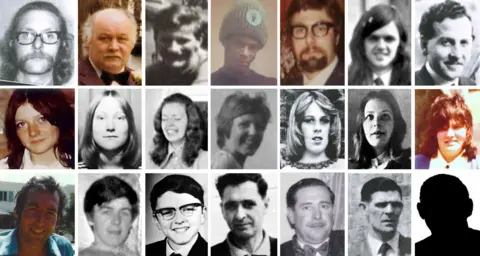 Birmingham Inquests
Birmingham InquestsThe biggest unsolved mass murder in British history happened 50 years ago in Birmingham after IRA bombs were detonated in two city-centre pubs, killing 21 people.
Six innocent men served more than 16 years in prison, but the real perpetrators have not yet been brought to justice.
What happened in the Birmingham pub bombings?
At 20:11 GMT on 21 November 1974, a telephonist at the Birmingham Mail and Post received a call from a man who said two bombs had been planted in the city centre.
Seven minutes later the first device detonated at The Mulberry Bush, a pub at the foot of the city's iconic Rotunda building.
Then, at 20:20, a second explosion gutted The Tavern in the Town, an underground bar directly below the tax office.
In total 21 people died and 220 were injured.
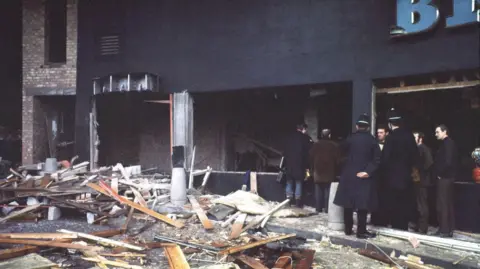
Who were the Birmingham Six?
Later that evening, five Irish men were stopped by police in Heysham, Morecambe, on their way to catch a ferry to Belfast.
Paddy Hill, Johnny Walker, Richard McIlkenny, Gerry Hunter and Billy Power had left Birmingham by train.
They planned to see relatives and attend the funeral of James McDade, an IRA member who had died while planting a bomb in Coventry the previous week.
The men were taken to Morecambe police station for forensic tests, and police from Birmingham were soon on their way up the M6.
At the station, forensic tests appeared to show Mr Power and Mr Hill had handled explosives.
A sixth man, Hugh Callaghan, was arrested in Birmingham the following day.
After Birmingham officers took charge, Mr Callaghan, Mr Power, Mr McIlkenny, and Mr Walker said they were coerced through physical and psychological abuse into signing confessions.
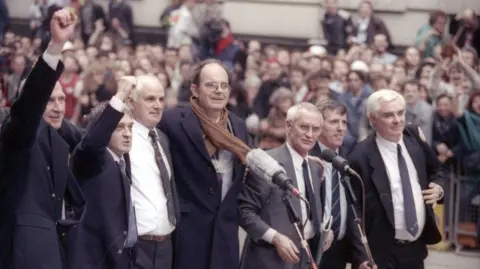 Reuters
ReutersHow were the Birmingham Six proven innocent?
The men went on trial in 1975 and protested their innocence.
The court rejected their pleas and they were each handed 21 life sentences.
A first appeal the following year was unsuccessful. In addition, a separate trial cleared 14 prison guards of their beating at Winson Green.
In 1980, the Six attempted to bring a civil claim against police.
In dismissing it, Lord Denning said to accept officers had lied and beaten them would have created such "an appalling vista" it was right the action should not go further.
Over time, the evidence was discredited by investigative journalist Chris Mullin, who became a Labour MP in 1987.
His programmes for ITV's World in Action cast doubt on the forensic and confessional evidence and also featured an interview with an unnamed alleged bomber.
Mr Mullin also published a book that argued the wrong men had been jailed.
Despite the growing evidence, the Six's second appeal in 1987 also failed, but at a third the verdicts were finally quashed and the Birmingham Six walked free on March 14 1991, after more than 16 years in jail.
The miscarriage of justice contributed to the later establishment of the Criminal Cases Review Commission.
The men were later awarded government compensation.
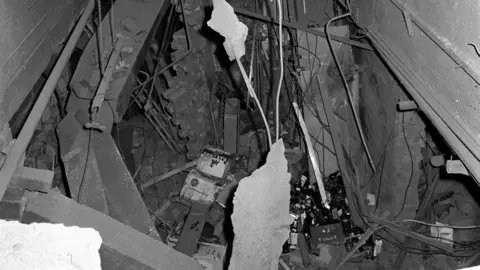 PA Media
PA MediaWho were the real Birmingham pub bombers?
The IRA had denied the six detained men were members, but never formally admitted responsibility.
In the 1980s, Mr Mullin said he had tracked down the real bombers, but did not reveal the names until 2019 when he identified Mick Murray, James Francis Gavin and Michael Hayes.
He withheld a fourth name, which he has still not disclosed.
After campaigning from relatives, an inquest into the victims' deaths reopened in 2019.
During proceedings, a person known as Witness O said Seamus McLoughlin, Mr Hayes, Mr Gavin and Mr Murray were involved.
Of those four, only Mr Hayes is still alive.
In a 2017 interview he would not comment on his role but said he took "collective responsibility" for the IRA's actions in England and apologised for the Birmingham deaths.
A fifth man, Michael Patrick Reilly, was named in 2018 by ITV's John Ware as one of two alleged bomb planters.
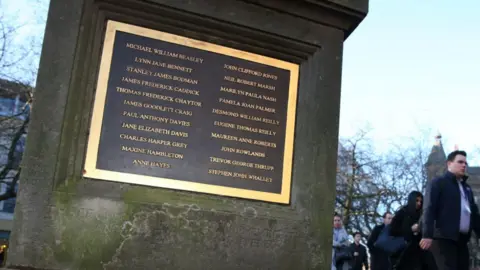 PA Media
PA MediaWho were the Birmingham pub bombing victims?
Seven women and 14 men aged between 16 and 56 died in the blasts.
Their names are Michael Beasley, John Rowlands, Stanley Bodman, John Clifford Jones, James Caddick, Neil Marsh, Paul Davies, Maxine Hambleton, Jane Davis, Stephen Whalley, Lynn Bennett, Desmond Reilly, Eugene Reilly, Marilyn Nash, Anne Hayes, Charles Gray, Thomas Chaytor, Pamela Palmer, Maureen Roberts, Trevor Thrupp and James Craig.
The inquest ruled they were murdered by IRA-planted bombs and the inadequate warning call led to their deaths.
Jurors also concluded police actions had not contributed to the loss of life.
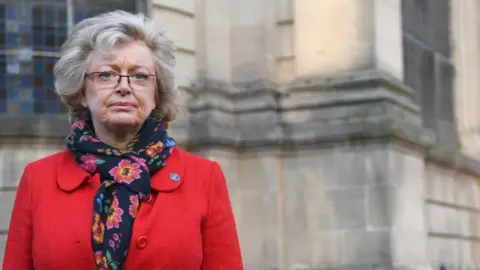 Getty Images
Getty ImagesAre police still investigating the Birmingham pub bombings?
In 1994, a West Midlands Police (WMP) reinvestigation found insufficient evidence for further prosecution.
In 2020, the force arrested a 65-year-old man reported to be Mr Reilly, but he was released without charge.
Two years later, it submitted evidence about an unnamed bomber to the Crown Prosecution Service (CPS), which did not pursue a conviction.
In October 2024, Chief Constable Craig Guildford confirmed the force's investigation remained open and promised to pursue any fresh evidence.
However, victims' groups are concerned the 2023 Troubles Legacy Bill, which introduced a conditional amnesty to those accused of killings, prioritises perpetrators over justice.
Will there be a public inquiry into the Birmingham pub bombings?
Families of the deceased continue to campaign for the perpetrators to be brought to justice.
Justice for the 21, led by Julie Hambleton, whose sister Maxine died in the bombings, wants a full statutory public inquiry to resolve unanswered questions.
As yet, no decisions regarding an inquiry have been made.
Follow BBC Birmingham on BBC Sounds, Facebook, X and Instagram.
